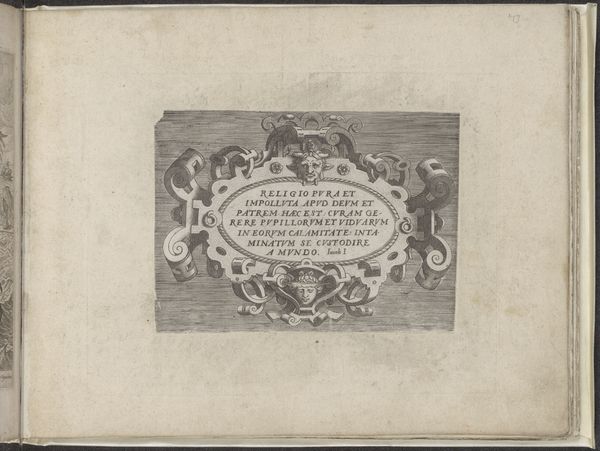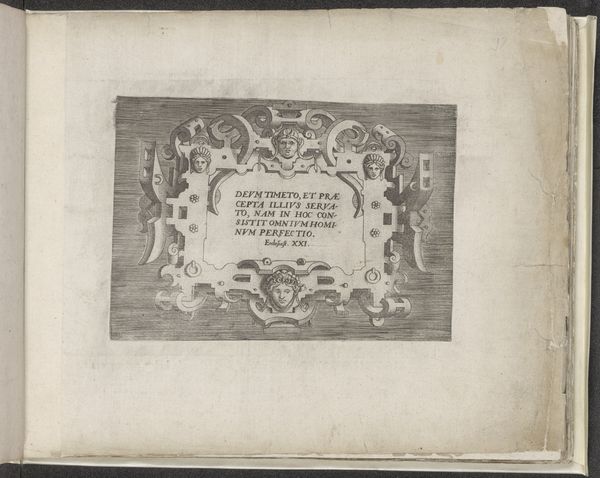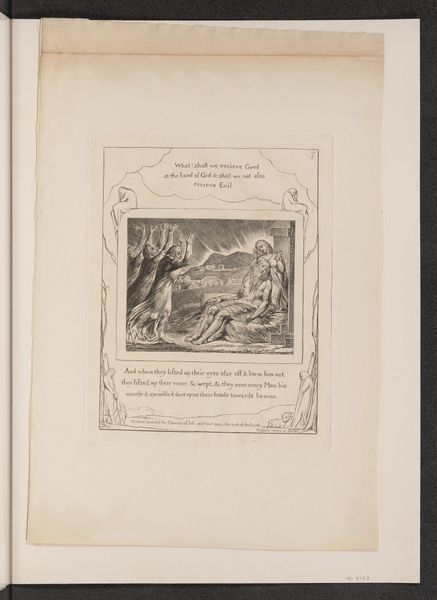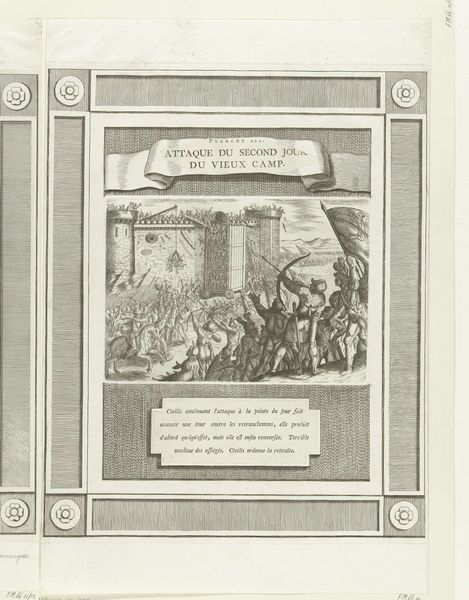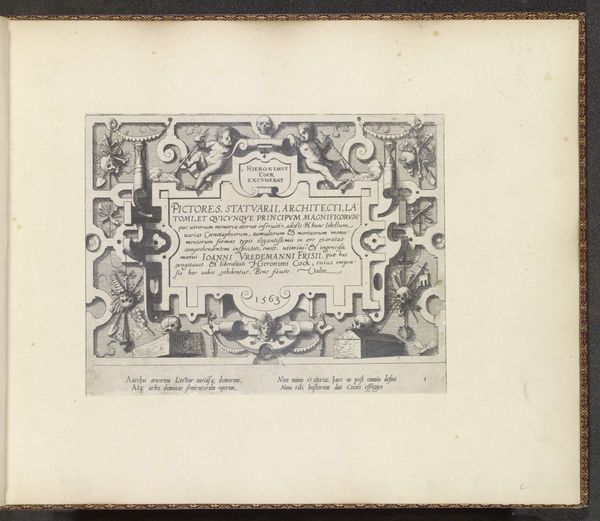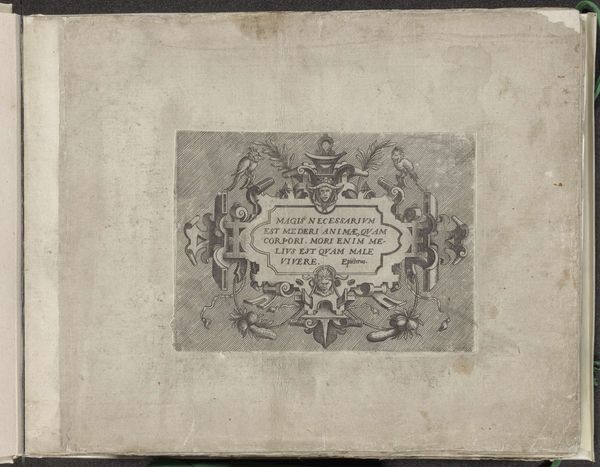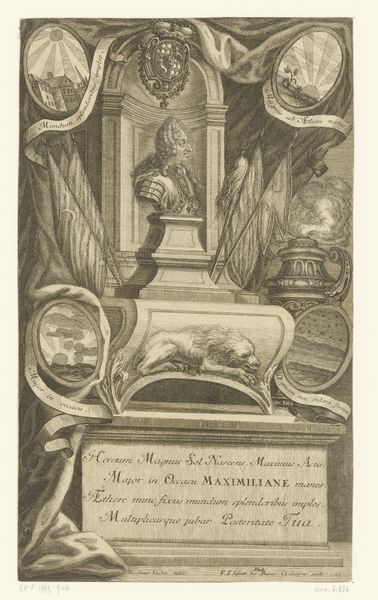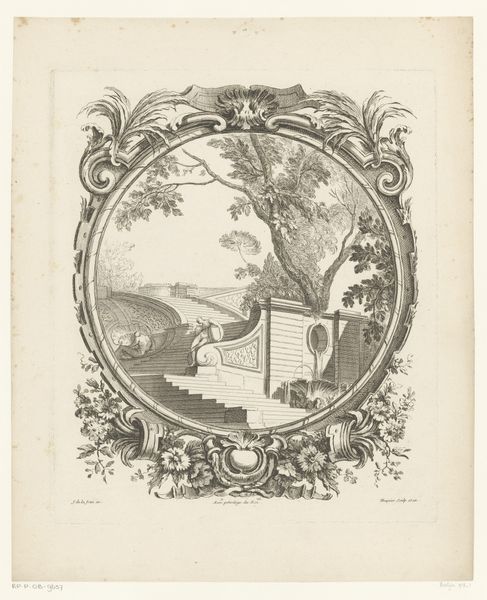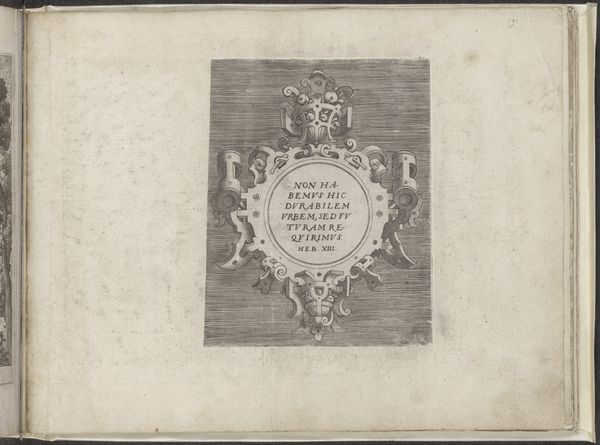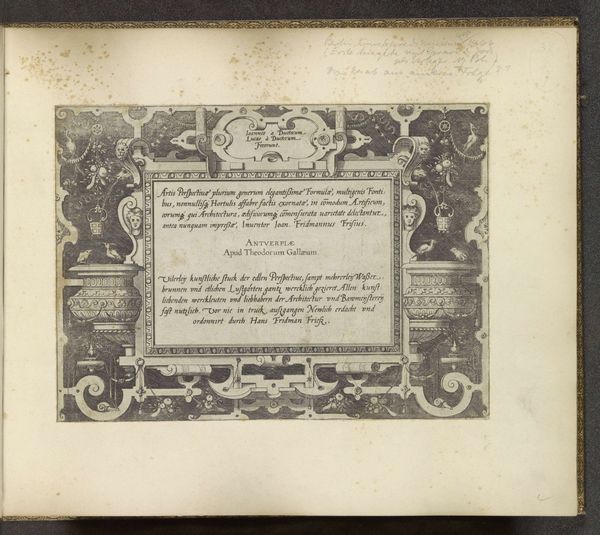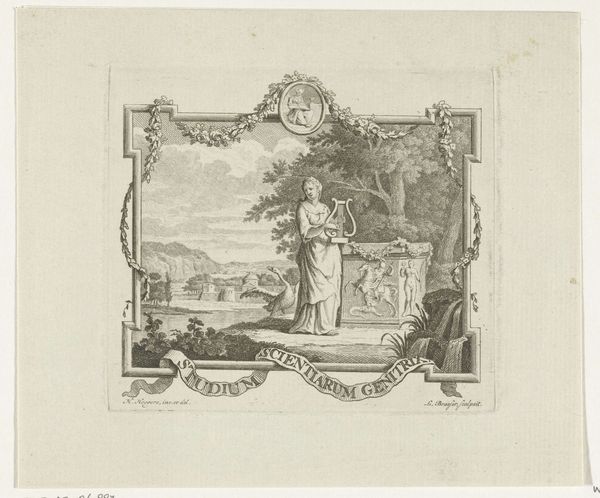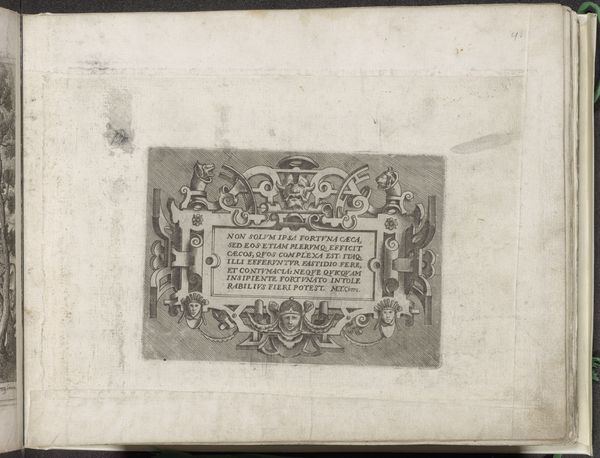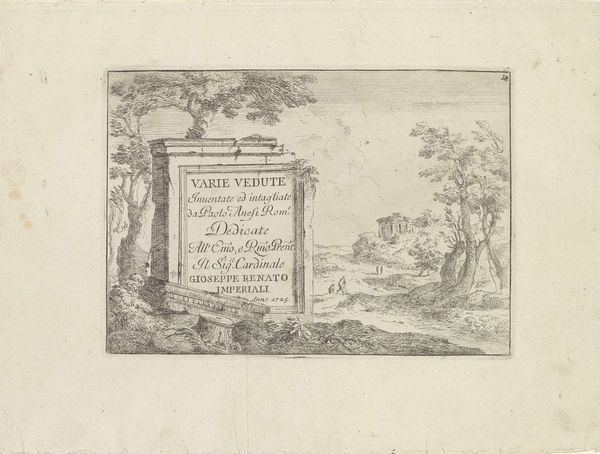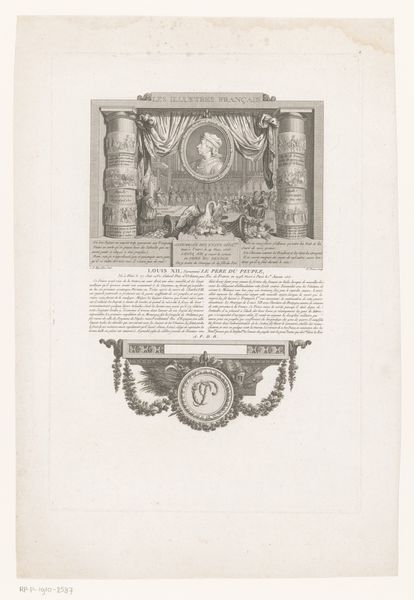
drawing, print, engraving
#
drawing
#
baroque
# print
#
landscape
#
cityscape
#
engraving
Dimensions: height 147 mm, width 181 mm
Copyright: Rijks Museum: Open Domain
Curator: Here we have a drawing and engraving by François Morellon La Cave, made in 1733. It's titled "Monument met een landschap met zonnewijzer" which translates to "Monument with a Landscape with Sundial". What strikes you about it? Editor: Immediately, it's the sundial taking center stage, framed like a window onto a distant landscape. There’s a sense of order here, everything seems carefully arranged, with a hint of melancholy perhaps? Curator: I agree about the careful arrangement. This work really speaks to the Baroque fascination with order, structure, and symbolic meaning. The sundial, traditionally, isn't just about telling time; it's a symbol of mortality, the fleeting nature of existence, the inexorable march of time. Editor: Right, it’s more than a scientific instrument here; it’s loaded with symbolic weight. The Latin inscription above, "MIHI DUX ET REGULA CÆLUM," meaning "Heaven is my guide and rule," reinforces this. The artwork operates on two levels: visually beautiful and morally instructive. The landscape acts almost as a stage, with the architecture becoming part of it and not a monument separated from the setting. Curator: Exactly! The whole composition, with its blend of architectural and natural elements, functions as a memento mori. And let’s not forget the figure of Elisabeth mentioned in the French inscription! Who was she and how does her upright and steady soul relate to following astronomical regularity as our 'Devoir', or Duty? Editor: And by implication, what's the duty of an audience for a print like this? To accept the rules of conduct as literally and figuratively written in the stars? Was she perhaps a known patron or intellectual of the period? If this was indeed intended to function as an aesthetic monument, its cultural effect is contingent upon further information about this patron. Curator: That’s a crucial point, understanding the original audience changes our own. Though much time has passed, such symbols still resonate with our current anxieties about the state of the world, giving this historical piece continued relevancy. Editor: It’s a delicate balance, isn’t it? Recognizing its historical context and the enduring power of these fundamental human concerns across eras. Thanks to works like these, we realize not much has changed.
Comments
No comments
Be the first to comment and join the conversation on the ultimate creative platform.
